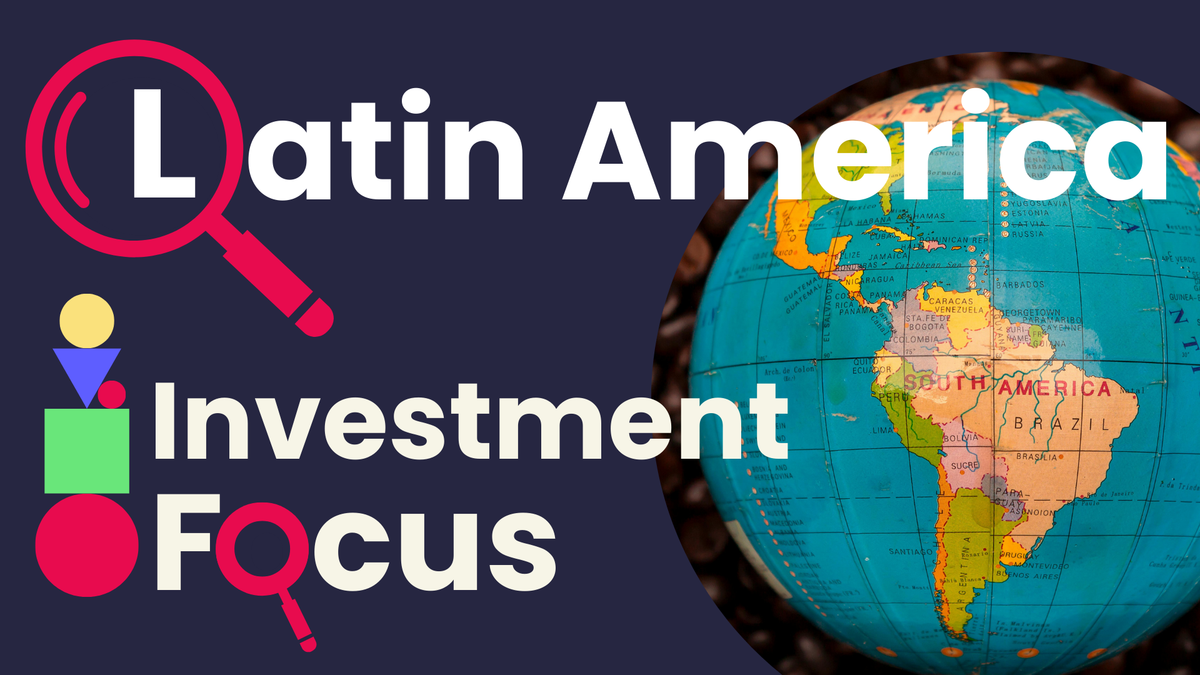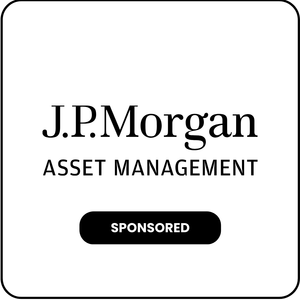Investment Focus: Latin America
Why the high returns sector is staging a comeback in 2025
In spite of the brickbats of Trump's tariffs on Mexico and Brazil, Latin America has been the top performing sector for the year-to-date. That is in notable contrast to 2024, when investors lost around a quarter of any money they had invested there. In turn, that marked a change from 2022 and 2023, when it also topped the performance tables - but not from 2021, when it was at the bottom again. Astute observers may spot a pattern.

Market overview: Economic evolution challenges old stereotypes
Investing in Latin America has been a roller-coaster. This is in part due to the nature of the markets there, which are focused on economically-sensitive areas such as natural resources and commodities. But it's also because the region tends to fall in and out of fashion with international investors. The key has been to spot a down moment and capitalise, but this type of market timing is not always easy.
This is a pattern that better fits the old stereotype of Latin America, where radical governments created cycles of economic boom and bust. However, for much of the region, that stereotype no longer applies. In reality, many Latin American countries now follow more orthodox economic policies than their US neighbour, responding quickly to inflationary threats and keeping borrowing in check.
For example, in the recent post-pandemic inflation squeeze, the Brazilian central bank started hiking rates a full year before the US Federal Reserve[1] and has been swift to start hiking them again as inflationary pressures have re-emerged. While there are some countries that merit their Wild West economic reputation, most have moved on and take an increasingly mature approach to their public finances.
In general, economic growth across the region has been stable, if unexciting. The IMF is forecasting growth of 2.2% growth for 2025 and 2.4% for 2026. This puts it some way behind other emerging market behemoths such as China or India (5% and 6.5% respectively for 2025), but is still a stable backdrop in which to invest.
Opportunities and challenges
Diversification away from commodities driving growth
Latin America is becoming a more exciting place to invest. For example, until relatively recently, the region's markets were dominated by commodities' companies such as Vale, Petrobras or Grupo Mexico. While these are still a large part of regional economies - particularly for countries such as copper-rich Chile - they have been joined by companies such as telecoms group America Movil, a range of financial companies, the region's Amazon equivalent Mercado Libre, or Walmart Mexico.
The growing importance of consumer companies reflects the region's burgeoning consumer economy. Brazilian consumer spending, for example, has risen from 199,000m BRL to 231,000m BRL in a decade.[2] Mexico has also seen strong consumer growth since 2020.[3] This has accelerated significantly since the pandemic and e-commerce has also become increasingly important across the region.
Trump tariff threats loom over trade relations
However, the ongoing tariff turmoil remains a threat, particularly for Mexico. Mexico is deeply embedded in US supply chains, and Chinese companies have traditionally used it as a backdoor to American markets. Brazil has so far walked a fine line, managing to trade freely with both China and the US. That may be under threat as President Trump tries to force people to pick a side.
Market composition dominated by Brazil and Mexico
The two main markets in the region are Brazil and Mexico. These are the largest economies and the most well-developed stock markets. Brazil is 60% of the MSCI EM Latin America index, with Mexico another 27%. Chile has 6.6%, Peru 4.4%, and Columbia 1.8%.[4] Argentina is a minor market in the region, but has the prize of e-commerce giant Mercardo Libre.
MSCI Emerging Markets Latin America Index: Countries by weight
Latin America may be known for its natural resources, but financials actually represent the largest weighting in the index (35.6%). This includes Brazilian digital banking giant Nu Holdings and rival Itau Unibanco. Mexico's Grupo Financiero Banorte is also a large player in the region.
Materials companies make up just 16.9% of the market, with global mining groups Vale and Grupo Mexico among the largest firms in the region. Brazilian energy giant Petrobras is also a significant part of the index.
MSCI Emerging Markets Latin America Index: Sector by weight
Brazil and Mexico also have vibrant small and mid cap sectors. These include a more diverse range of sectors than is available among large caps in the region. Equally, they may have greater exposure to new and growing segments of the economy, such as technology or consumer groups.
High interest rates create bond competition
Latin American markets are also highly sensitive to domestic interest rates. When interest rates are high, investors will often plump for bonds over equities. For example, the Brazilian 10-year bond yield currently sits at 13.8%.[5] This sets a high hurdle for equity markets. Many investors decide the risk/reward is better in the bond market.
It is worth noting that Latin American markets tend to have an attractive dividend yield. In aggregate, companies in the MSCI EM Latin America index pay an income of 5.3%, more than double that of the wider emerging markets index. This is partly because of the sector make-up of the market, with a lot of cash-generative areas such as natural resources or banking, but it also reflects the low valuations for Latin American companies.
The small and mid cap sectors tend to follow an even more extreme pattern than the major Brazilian markets. The Stoxx Brazilian Mid Cap sector, for example, is up 37.6% for the year to date,[6] but has seen similar volatility.
Performance: Stellar returns counter 2024 losses
Latin American markets have powered ahead this year, with the MSCI EM Latin America index up 24.5% for the year to date (to 31 August 2025). That is more than four times the return of the MSCI ACWI index (6%) and ahead of the wider Emerging Markets index (10.3%). Columbia was the best performing market globally in the first half of the year, while Mexico and Chile have also been strong. Brazil and Peru are just behind.
Latin American vs global equities, YTD returns
Source: FE FundInfo, September 2025.
Emerging market specialist investment group Ashmore says this is typical at this point in the political cycle in the region:
LatAm tends to perform well towards the end of the political cycle, but especially when left-wing incumbent parties look increasingly likely to be replaced by a more market-friendly, centre-right administration. Currently, five out of the six major LatAm countries are being run by left-wing governments, where loose fiscal policies have supported growth but lowered investor confidence in economic stability. Four of these will go to the polls in the next two years. Last year proved a terrible one for incumbents, and polling data suggests 2025 and 2026 are likely to be no different.
As is typical for Latin America, this strong return came immediately after a very difficult period. The MSCI EM Latin America index dropped in 2024, falling behind the global MSCI ACWI index. This pattern of highs and lows has been a feature of Latin American markets for some time. There tend to be points in the market cycle when global investors take an interest, and other times when they withdraw capital.
Latin American vs global equities, 5-year performance
Source: FE FundInfo, September 2025.

Outlook: Exciting opportunity for experienced investors
Mixed projections amid political uncertainty
The tariff problem is difficult for the region. President Trump has used the threat of tariffs to win political concessions from Brazil and Mexico and this is likely to continue. At the same time, the region is vulnerable to any slowdown in the US economy should tariffs start to weigh on domestic growth.
On the Brazilian economy, Deloitte says the outlook is mixed:
The Brazilian economy rebounded strongly in the first quarter, with real GDP growing 5.7% on an annualized basis from the previous quarter.[7] This is up from just 0.2% growth in the fourth quarter of 2024.
Despite the strong start to the year, economic growth is expected to slow, with higher interest rates likely to begin restraining activity. The labour market is showing nascent signs of easing, which should take some wind out of consumers' sails. In addition, rising trade barriers in the United States may also present a downside risk to the outlook.
However, once inflation comes back to the central bank's target, monetary easing can begin again, ushering in stronger growth. Unfortunately, that is unlikely to happen this year. Interest rates in Brazil are currently 15%, so there is a long way to fall when the environment finally turns.
Mexico to benefit from nearshoring trend
On Mexico, Vanguard says the country continues to benefit from US-China trade realignment, in spite of the tariffs, adding:
Nearshoring trends reinforce Mexico's role as a key supply-chain hub. With United States-Mexico-Canada Agreement exemptions, nearly 80% of Mexico's exports to the US are duty-free, translating to an overall effective tariff rate near 7%—one of the lowest among US trading partners.
It believes Mexico should capture a greater share of US manufacturing over time, boosting its economy. Mexico is already cutting rates.[8]
Crisis valuations present opportunity
The question is whether this economic slowdown matters very much for stock markets. In the end, valuations may prove to be more important. Ashmore says that Latin American markets were trading at 'crisis' valuations at the start of this year, with a lot of bad news already reflected in market pricing. It says:
These concerns have not fully dissipated. However, investors have been reassessing their positions given the positive skew in the risk/reward ratio of LatAm equities which trade at depressed levels, despite relatively resilient economic fundamentals and potential political turnaround ahead. Unemployment rates across major economies are close to, or below their long run averages. Growth has surprised to the upside across most countries for three consecutive years and again outperformed expectations in Q1 2025 despite elevated real interest rates across most countries.
It is optimistic, saying the region offers a "rare mix of value, income and cyclical upside, backed by structural drivers like the energy transition, Mexico's nearshoring boom and rising financial inclusion." As with many other countries, it would only take a fraction of the money in the US to be diverted to Latin America for it to make a real difference.
However, the region's real problem is its lack of stock market clout. It's a relatively small part of the global emerging markets universe (Brazil is just 4.4%), with China and India far more dominant players. International investors do not need to be invested there. With this in mind, they tend only to take an interest from time to time. Nevertheless, when momentum builds in the region, it can be a very exciting place to invest.
How to invest in Latin America: Funds, Trusts and ETFs
While emerging markets funds will hold some exposure to Latin America, investors may find that many will hold less than 10% in the region. There tends to be more growth on offer in India and China, and this tends to be where they focus their attention. If investors want dedicated exposure to the region, they may need to look at specialist funds.
There are a diminishing number of active investment funds that cover the region. Among open-ended funds, Aberdeen, Barings, BlackRock, Columbia Threadneedle, JP Morgan, Liontrust, Schroders and Templeton all have specialist funds in the region. Barings and Schroders have been the top performers over five years.
There is just a single dedicated Investment Trust - BlackRock Latin America.
Many active funds have struggled to beat the index, particularly when markets have been buoyant. There are plenty of passive options that track the region's major benchmarks. iShares has an ETF tracking the MSCI EM Latin America index, plus MSCI Brazil and MSCI Mexico options. Amundi also has an MSCI EM Latin American option. Global X even offers an MSCI Argentina option – not for the faint-hearted!
---
[4] MSCI EM Latin America Index
[6] Stoxx
[7] Deloitte
[8] Vanguard



